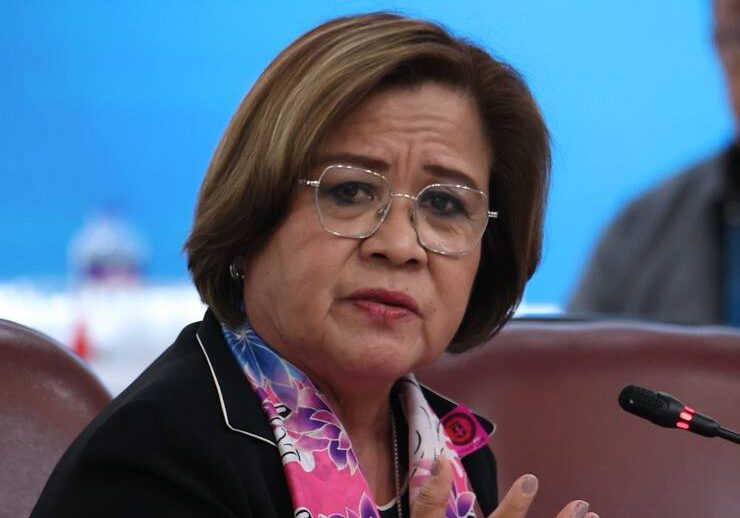Seeing the bright side of 19%

The newly negotiated 19-percent tariff on Philippine exports to the United States is seen to enhance the country’s position as an investment and manufacturing hub in Southeast Asia, government officials who accompanied President Marcos in his recent US trip said.
The government also said it ensured that the zero tariffs on US goods will not affect the country’s main agricultural products such as corn and rice.
“The outcome of the meeting serves as a strong start to maintain the country’s comparative advantage to our largest export market and overall, one of our major trade and investment partners,” Special Assistant to the President for Investment and Economic Affairs Frederick Go and Trade Secretary Cristina Roque said in a joint statement on Thursday.
Go and Roque said the new tariff rate is the second-lowest in Southeast Asia, trailing behind Singapore’s 10 percent, while neighboring countries face import duties ranging from 19 percent to 40 percent.
This makes the Philippines one of the most competitive Southeast Asian economies in trade with America.
Fine print
The two officials said the relatively mild tariffs could attract foreign investors and give the country a “competitive edge” as a manufacturing hub focused on the US market.
“Enhanced market access will enable the Philippines to become a more attractive destination for export-oriented investments—opportunities that might have otherwise gone to our neighbors,” Go said.
In addition, foreign companies that cater to the US market may consider relocating their operations to the Philippines.
With parties finalizing the fine print of the new US-PH trade agreement, Roque assured that government negotiators will continue to protect major domestic agricultural and manufacturing industries.
Go said trade negotiations would continue even after the meeting of Marcos and US President Donald Trump at the White House.
“The concessions we will extend are strategic to the Philippines. These are products that we do not locally produce and are critical inputs to reducing the cost of health care, for example,” he said.
Concessions
In a separate briefing in Malacañang also on Thursday, Go said the government thoroughly studied the effects of the tariff.
“We did not include in the concessions we granted all of the products where we are a significant market producer,” he said.
This means that American products like sugar, corn, rice, chicken, pork and seafood will still be subjected to Philippine tariffs. This shields domestic industries from foreign competition by increasing the cost of imported goods and making them less attractive to consumers and businesses.
“Our farmers and fisherfolk do not need to worry,” Go said.
Go added that unlike Indonesia and Vietnam, which also struck favorable deals with Washington, the Philippines did not need to make “full concessions.”
Indonesia was able to bring down US tariffs on its products to 19 percent from 32 percent. Meanwhile, goods from Vietnam would be subject to a 20-percent tariff, a sharp drop from the 46 percent announced in April. Both countries, however, will charge zero tariffs on US products.
On the other hand, the Philippines offered an open market to the United States and zero tariffs only on certain goods, such as automobiles, soy, wheat and pharmaceuticals.
The Philippines currently applies a 1 percent tariff on soy products, up to 7 percent on wheat products, 1 percent on most pharmaceutical products, and up to 30 percent on motor vehicles coming from the United States.
Lower prices
Go said imposing zero tariffs on US imports such as medicines and automobiles, which the Philippines do not mainly manufacture, would result in lower prices of these products.
“By opening the automotive or car sector to the United States, then we are not negatively affecting any local industries here,” he added.
However, while the Philippines is not a major manufacturing hub unlike some of its Southeast Asian neighbors, it still hosts assembly plants of several major car manufacturers such as Toyota, Mitsubishi and Honda of Japan.
The country is also set to benefit from zero tariffs on wheat, which is not produced on a commercial scale locally, and is used in making pandesal and bread. Likewise for soy, a main source for feeds for pigs, chickens and even fish.
Other trade partners
Go and Roque also said the government is actively negotiating free trade agreements with other key trading partners such as Canada, United Arab Emirates and Chile.
The country’s exports totaled $73.21 billion in 2024, down by 0.5 percent from a year ago, data from the Philippine Statistics Authority showed.
The United States was the leading export destination with a share of 16.8 percent or $947.77 million during the reference period.





















